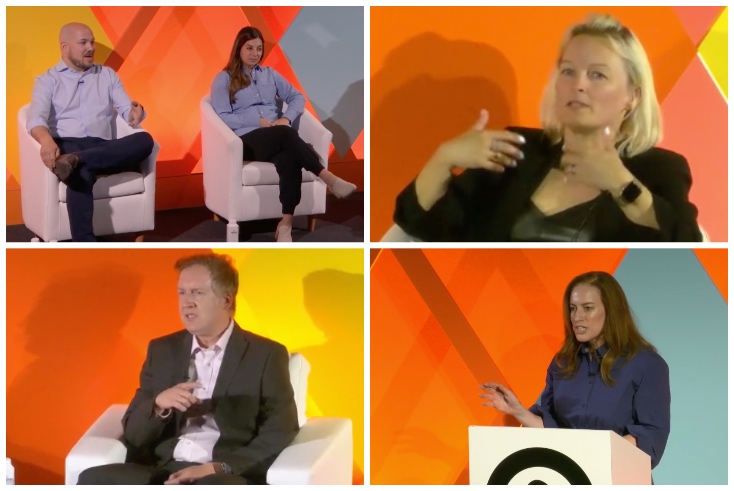Feature
Advertising Week Europe took over the Picturehouse Central cinema complex in London’s Piccadilly for three days of industry insights last week. Mike Fletcher reports on discussions around three key areas: artificial intelligence, data, and connected TV.
Henry J. Heinz once said: ‘To do a common thing, uncommonly well, brings success.’
According to Matt Cosad, head of data & analytics at Kraft Heinz, Artificial Intelligence (AI) is keeping Henry’s mantra alive and well at the company.
“We use it to analyse and assess 20,000 creative assets globally each year for performance-driven factors such as consistent colour saturation, product placements, how much of the hand pouring the sauce should be showing, and the prime time for talent to enter the frame,” he told the Advertising Week Europe audience.
By ensuring the consistency of creative factors across global advertising assets, Kraft Heinz has improved efficiencies by swapping proven assets in and out of campaigns, allowing marketers to iterate much faster to test and learn more effectively.
Unsurprisingly, much of the AI-focused discussions elsewhere at Advertising Week Europe 2023 covered the rise of generative AI and the role humankind should play in AI’s future development.
Google’s new managing director, UK & Ireland, Debbie Weinstein (pictured, below) was keen to remind delegates that ChatGPT and GPT-4 from OpenAI (the AI Lab backed by Microsoft) weren’t the only generative AI language models making headlines. Google also has one called Bard and it, too, is getting smarter by the day.
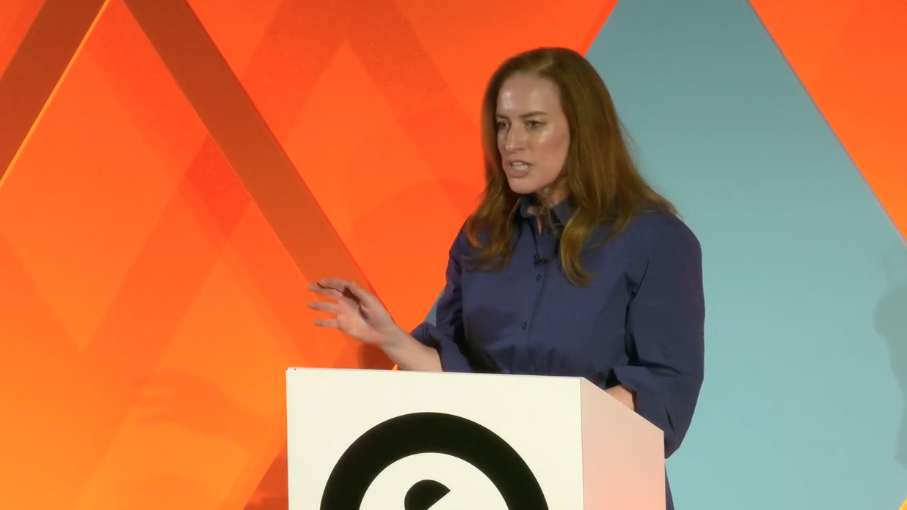
According to Weinstein, you can now export part of a Bard conversation into both Google Docs and Gmail, making it easier to draft a presentation outline or an important email before converting it to another Google tool.
Weinstein’s advice for working with AI was three-fold – achieve clarity around the business problem you want AI to solve; differentiate yourself through better first-party data; test, learn and scale repeatedly to grow your business.
It’s undeniable that AI is changing how media works. Brands have gone from buying space to buying audiences, to buying outcomes. AI has brought scale to segmentation and simplicity to complex goals.
Moreover, heritage brands are using AI to stay relevant and connect with new audiences as Peter Markey, CMO at Boots UK explained.
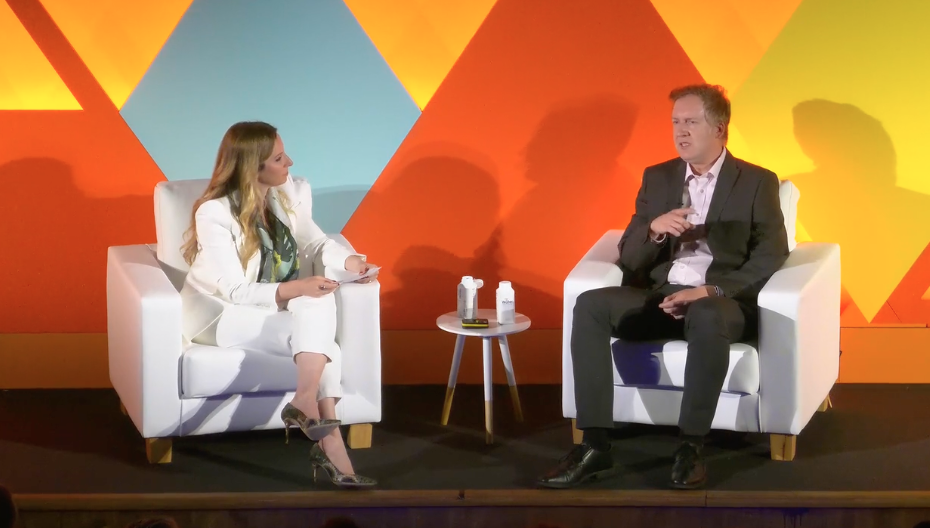
Markey (pictured, above, right) told Meta’s Derya Matras: “For a 170-year-old brand like ours, you only win if you can achieve better reach and connect with younger audiences who are more likely to stay with you for life. It’s why we encourage media owners to pitch us innovative advertising solutions and push our agencies hard to help us to work smarter and win around the edges.
“AI improves performance marketing but it also requires a flood of human-driven ideas and creativity. We need to manage the tension between science and art.”
This balance between what AI can do for marketers and what humankind can do for AI was a repeated theme throughout Advertising Week Europe.
Speaker after speaker concluded that humans have an important role to play in guiding the future evolution of AI models.
We’ll always need to ensure that generative AI outputs are checked for factual accuracy, subconscious bias is removed from machine learning, and AI is properly regulated to comply with GDPR and other privacy legislation.
Data downloads
Much of the discussed opportunities around ‘growth’ centred on using AI to mine big data sets such as search and social for ‘unknown insights’.
By identifying more subtle brand references or associated keywords, for example, marketers can ‘show up’ in more relevant, timely ways, reach new audiences and deliver more personalised messaging.
Diageo’s vice president of data & operations Joshua Nafman advised embracing AI-driven data insights to, ‘‘make the most informed decisions possible based on innovative use of data. Then really own those decisions and optimise.”
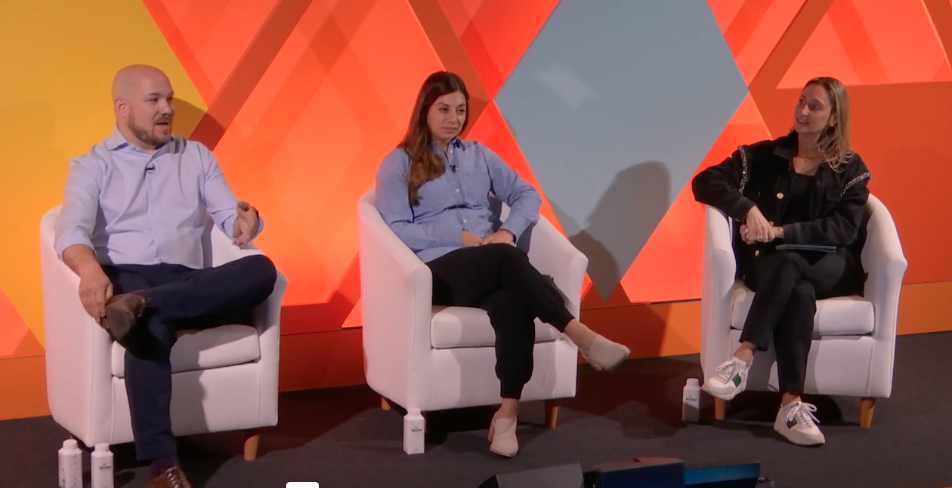
Joining Nafman on stage (pictured above, left) was Lindsey Eckhouse, director of licensing & digital products at McLaren Racing and Media.Monks’s chief growth officer EMEA Maria Nordstrom. Eckhouse described how McLaren caters for both ‘avid’ fans and ‘trend’ fans across five different race series, ranging from F1 to eSports and Formula E.
For her, effective data usage is not only pivotal for personalising messaging and recommendations to those specific fan cohorts but it’s also used to devise strategies that will convert one audience type to another part of the McLaren racing offer.
“We study the data to see fans’ entry point and whether they’re more interested in the mechanics of how the cars work or what the drivers are wearing or saying for example,” Eckhouse said. “Building segmented communities and then cross-populating them is key. Relevancy and personalisation build true brand loyalty and that’s when the connection occurs.”
Connected TV
The biggest challenges around measurement were raised from the Connected TV conference track.
Despite the medium’s accelerated evolution, CTV measurement and tracking just haven’t progressed as quickly as analysts thought they might a few years ago.
Frequency management remains a minefield of complexity, and measurement data is still device-driven rather than focused on individual users – so targeting by gender, age and other cohorts is still proving elusive.
As Katie Coteman, GVP and head of advertising and partnerships for the UK and Ireland at the recently merged Warner Bros Discovery explained, the expertise around linear TV infrastructure is so strong that matching these capabilities in CTV isn’t easy and will take more time.
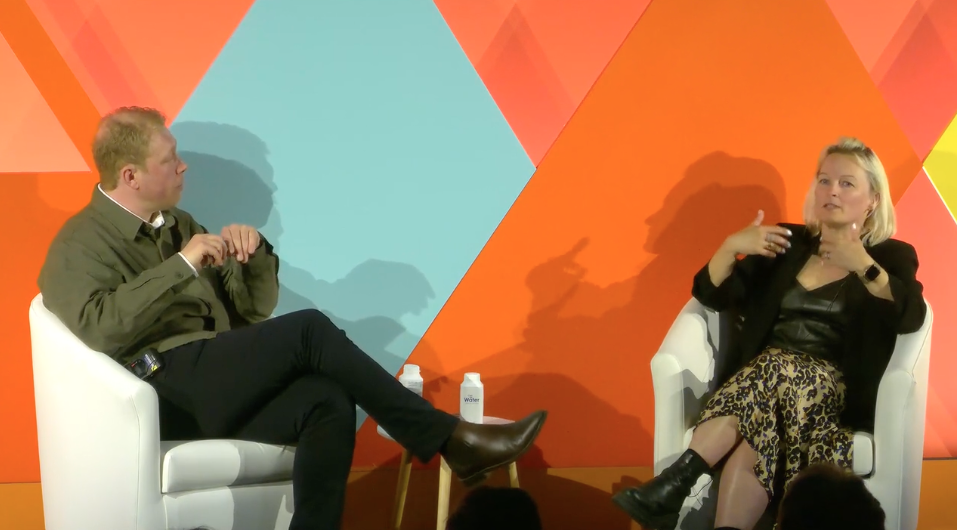
“We all have a lot of ambition in this area,” Coteman (pictured, above, left) told Publica’s Paul Gubbins. “But it’s quite complex; it’s incredibly fragmented. The way to win, we believe, is not to have lots of different products – further muddying the water – but to have one premium product.
Warner Bros Discovery sells much of its inventory programmatically but as Coteman admits, a large proportion of the creative content remains repurposed linear TV ads. It begs the question, why shouldn’t the traditional ad-break model evolve for the CTV ecosystem?
Coteman told delegates that Warner Bros Discovery is trialling several ad-break innovations including takeover 90-second pre-rolls and static ads that fill the screen when a viewer hits pause – opening up new attention-led opportunities for the future.
Elsewhere, Justin Sampson, the CEO of BARB argued that CTV content must meet its ‘Fit for TV’ criteria to ensure consistency of measurement with linear.
‘Fit for TV’ includes editorial oversight to ensure brand safety and a higher standard of quality. But are consumers on the same page?
Coteman thinks not. She said: “Brands would much rather be associated with professionally-produced premium content but younger audiences prefer YouTubers and social-fueled content. Companies are missing out if they don’t widen their definition of TV programming. But to do so would mean taking onboard different planning mechanics and measurement formats.”
Defining where video and user-generated content ends and CTV begins will therefore require wider consultation and collaboration.
Adwanted UK is the trusted delivery partner for three essential services which deliver accountability, standardisation, and audience data for the out-of-home industry.
Playout is Outsmart’s new system to centralise and standardise playout reporting data across all outdoor media owners in the UK.
SPACE is the industry’s comprehensive inventory database delivered through a collaboration between IPAO and Outsmart.
The RouteAPI is a SaaS solution which delivers the ooh industry’s audience data quickly and simply into clients’ systems.
Contact us for more information on SPACE, J-ET, Audiotrack or our data engines.
